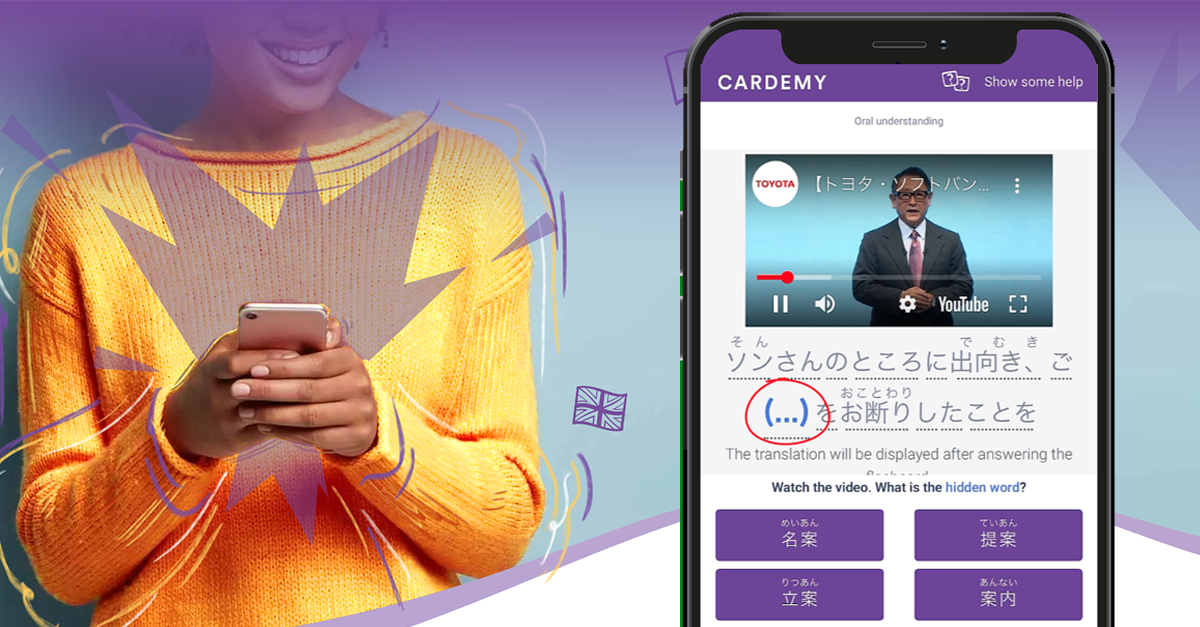If you haven't yet read my first article describing the troubles I went through after arriving to Japan, don't hesitate to do it after reading this article.
Moving on to my second job in Japan, I had less opportunities to work in Japanese and speak business Japanese. Indeed, in this new job, a Japanese person was in charge of the Japanese side whereas I handled foreign customers. My problem was that it was often mandatory for me to go through appointments in Japanese and, as I had less chances to practice, I could not fail and retry as I used to. So, I felt more pressure with improving my speaking skills.

This is why I decided to take Japanese classes after work to help me improve my Japanese skills and be ready for these specific meetings. I was not limited to a precise type of industry this time, I just needed to improve my vocabulary and global knowledge in the language. I also wanted to improve my level in writing Japanese business emails. And that’s how I came back to school.
I tried many different courses that were recommended to me based on my level (intermediate course, business Japanese course, fluent speaking lesson…) and none of them worked for me. First of all, I was put off by a specific exercise that was done in every single class I attended: the teacher reads a sentence and then ask the whole class to repeat it at the same time, creating a big brouhaha and, even today, I cannot understand which purpose this exercise serves. I guess it is supposed to help practicing pronunciation, but the teacher can’t hear you in the midst of other people. Group class has its perks such as meeting other learners and doing team exercises with people on the same level. However for me, I felt that I was wasting my time and that it was not time efficient.
I then decided to try private lessons in that same school. Since all of my complaints came from the inner nature of group classes, I thought that going for private lessons would work better. Unfortunately, the result was not exactly up to my expectations. Because of schedule constraints, my teacher was not the same every time. It was hard to have a proper link between each lesson, even though the study goal was the same (Japanese for business, Japanese for client meetings). The classes were personalized but it was kind of improvised on the moment. Aside of my notes and pictures of the whiteboard, it was hard for me to study and remember everything after class. I decided to stop.
I decided to stop and just learn by myself as I felt that I could not find resources that were suitable to my own objectives and current level. So I just went for a mix of many general materials I already had (apps, books). I also tried to use Japanese language at work whenever it was possible.
As my work in Tokyo, at the French Chamber of Commerce and Industry in Japan implied meeting with a lot of companies from various industries, I was introduced to Cardemy, another school of Japanese language. Cardemy was interested to join the Chamber and access its business services. The offer of Cardemy was quite unique as it was a mix of e-learning with an app and private lessons.
.png?width=210&name=cardemy_logo_unleash_your_talent_margin%20(1).png)
At the beginning, I was not very eager to try it because the lessons were online and I had rather bad experiences with previous online lessons (bad audio quality, hard to read blackboard...).
Rather than the lessons, I was more intrigued by the functioning of the app since it seemed different from what I saw before. According to Cardemy, being able to study with videos was supposed to ease the memorization process. Cardemy’s teachers and its AI could recommend personalized videos illustrating how business Japanese phrases are used with the proper etiquette or in the very specific situations I was facing in my work. In my case, videos of actual people working in Japanese showing how business Japanese is properly used. I thought that having this level of personalization on an app was awesome.
So, I decided to try the solution out through their trial offer which consists of a private lesson combined with two weeks of e-learning access to their app. I shared my availability, and I got a quick response from one of Cardemy’s teacher and we did the first lesson which went pretty well. First, I have been impressed by how smooth the class went despite being in an online format. The teacher was definitely accustomed to providing online classes as the support used during the class were smooth and suited for an online format.
Even during the first class, the teacher could quickly adapt to my level and give me relevant pieces of advice regarding my goals and target situations. I was still a bit put off by the online format that I find less human and that sometimes has internet connection constraints or so, but most of my problems were minimized by how used the teacher was to teach online.
After this first short lesson, I was granted access to Cardemy’s app. My first days using it were a bit confusing to me as the first “flashcards” sessions were quite short since I did not have many words to review (yet). I quickly noticed that the recommendations from the AI became sharper and sharper every day as I was using the app.
About 2 weeks later, I was astonished. I realized that I had already memorized all the new words and notions that I studied through the app as I encountered some of them while talking to clients at work. These two weeks experience was enough for me to confirm that the Cardemy’s approach with the combo of app & individual teacher lessons was very efficient. So I decided to enroll for a short commitment of 3 months to Cardemy’s Blended plan.

Upon having more lessons, the teacher could adapt more and more to my level and needs by creating fully personalized lessons. I quickly realized that having the same teacher every time is the best to have smooth and efficient lessons. At the end of each class, the teacher would recommend new vocabulary we just saw together directly on the app, easing the thinking process on how I will learn those new notions.
I could prepare situations such as phone calls, and other frequent dialogues that comes up when working in Japanese, with my teacher and then the app would reinforce my memorization and mastery thanks to an almost infinite number of videos. Basically, I was discovering expressions and practicing conversation with my tutor in class and then memorizing them between the class on the app.
Regarding the app, the only drawback I can find is that sometimes it can be frustrating to live “by the AI rules” as there’s times where I would like to study words in a bulk or spend more time on a single day on specific expressions, which is not currently possible on the app.
Having a flexible way of studying is also what I find truly beneficial with Cardemy. Traditional schools need you to commit to a lot of studying hours which can be good for some people but is clearly not adapted to working individuals (especially people working in Japan). With Cardemy I feel that the time is more efficiently used as I take lessons only to do what must be done with a teacher. The big part of my study time is on the app which does not involve extra costs. So, when I am too busy, I can just open my app and study the minimum required amount of time to “not forget” my flashcards.
Studying at Cardemy redefined my perception of both private classes and self-learning methods. There’s plenty of ways to study a language and it quickly becomes confusing as to when to start or what to use. I am now convinced that the best approach to progress towards one’s goal resides in the mix of private lessons combined with self-learning through apps. Aside of improving towards my business Japanese goals, this method helped me to improve on a general level in the language and I am glad that I could finally find my way of studying!
I hope you enjoyed this article. I am always happy to discuss about studying methods or give feedbacks regarding my personal experience in Japan.
If you liked this article, please feel free to share it or ask me any questions in the comments below!




Leave Comment